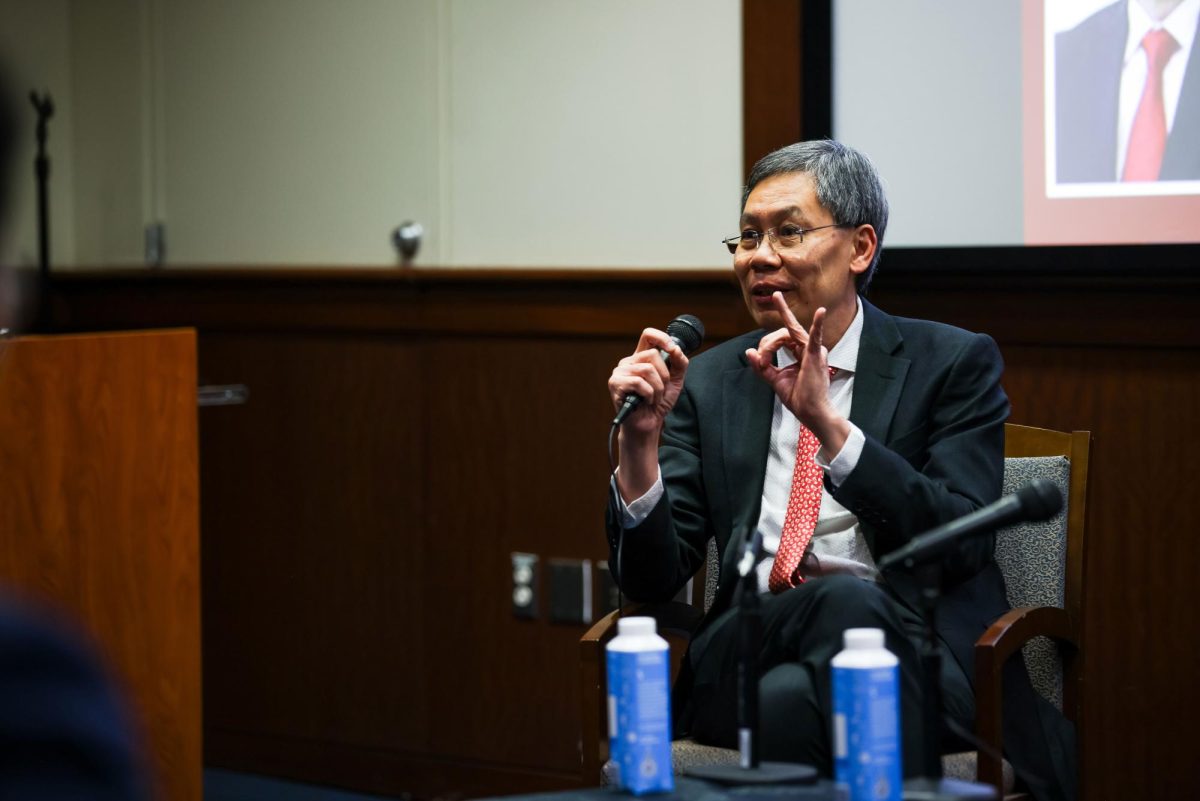With “Beyond Borders” (Paramount Pictures) out in theaters, some may be curious as to what director of “Golden Eye” Martin Campbell is doing casting “Tomb Raider” Angelina Jolie as a prissy socialite in the jungle. The day after I attended a panel and screening of the film, I had the opportunity to speak with Campbell on just what the deal is with his latest film.
Hatchet: At the panel discussion last night, you spoke about how you had the United Nations involved in the script development. What elements in the film were most heavily influenced by the U.N. consultation?
Martin Campbell: Not much. It was more research points and small things. It was more the research stuff; there was no censorship or anything like that. They had no control over that, obviously. It was more authenticating. We did change quite a lot through our advisers from Oliver Stone’s and Caspian Tredwell-Owen’s script.
H: As you said, Oliver Stone was involved with the film for about five years but left because he felt that its budget was inadequate. Were any of his ideas retained in the final film and were there any other reasons for his departure?
MC: A huge amount of ideas were his. In fact, the film is sort of his. I had another writer come in after (Tredwell-Owen), and we worked through the whole script. That was largely a process of reducing the script from what was 170-190-page script–
H: He’s not known for his brevity.
MC: No, he’s not. –to 125, which is standard length. But all of the scenes in that film, just about every one, are (Stone’s and Tredwell-Owen’s).
H: Some of the events depicted in this film are pretty brutal. Did you find it difficult to shoot those scenes, especially because they had their roots in reality?
MC: No. Filming is a very funny and mechanical process. Your problems are so immediate when you’re filming that you don’t get an objective view because you’re so bound up by the mechanics of filmmaking. So it’s difficult to get emotionally involved in something so mechanical. When you see the film in the end, it’s a different matter, but as you’re doing it shot-by-shot you want to strangle the kid because he’s fucking you over. You’re standing there with an entire crew in 120-degree heat, and this little bastard is building sandcastles.
H: Going back to the panel – you mentioned that you’d watched around 30 documentaries about relief workers and the problems they fight. Of these documentaries, which had the greatest impact on you, personally, and later on the film?
MC: I think the biggest impact was a documentary called “The Hunger Business.” I was under this misapprehension that aid workers somehow scraped together the money, bought truckloads of food, took it out and handed it out. Of course, that doesn’t happen. The roads they have to go through are so thick with red tape. It turns out that Playboy magazine is one of the great bargaining chips. It’s saved their bacon many times.
H: Wasn’t “Out of the Ashes” the documentary that inspired Bob Geldof to organize (the film) “Live Aid” in the first place?
MC: Indeed it was. The truth is, though, those documentaries are observing the camps, devastation and starving people, whereas “The Hunger Business” explains very succinctly what relief workers have to go through in order to get that bucket of wheat through to hand to the people.
H: Finally, you said that you screened this film for Kofi Annan. What was that like and what were his thoughts on the film?
MC: Well, I wasn’t actually at the screening, my producer was. But (Mr. Annan) gave us a big thumbs up. He thought that everything in the movie, to one degree or another, was very realistic. He didn’t balk at any of the characters, even (Jan) Steiger or Nick (Callahan’s) characters. I think his wife used to work in the refugee camps, so quite clearly (he) has a succinct understanding of all of that.




